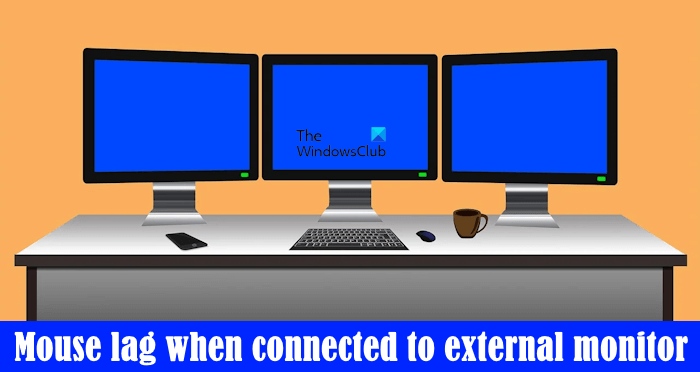Are you frustrated because your mouse is lagging on the monitor? Don’t worry, I’ve got you covered! It’s a common issue that many people face, and I’m here to help you understand why it happens and how you can fix it.
Imagine this: you’re playing your favorite game or working on an important project, and suddenly, your mouse starts moving sluggishly or even freezes altogether. It can be incredibly annoying, right? But fear not, because there are a few simple solutions that can get your mouse gliding smoothly again.
In this article, we’ll dive into the possible causes of mouse lag on your monitor and explore some troubleshooting tips to rectify the problem. So, let’s roll up our sleeves and get ready to conquer that pesky mouse lag together!
1. Check your mouse settings and adjust the pointer speed.
2. Update your mouse driver to the latest version.
3. Clean your mouse and mouse pad to remove dirt and debris.
4. Adjust your monitor’s refresh rate for optimal performance.
5. Try using a different USB port or connecting wirelessly.
Follow these steps to ensure a smooth mouse experience on your monitor.

Why Is My Mouse Lagging on the Monitor?
Are you experiencing frustrating delays and erratic movements when using your mouse on your monitor? This issue can greatly impact your productivity and overall computing experience. In this article, we will delve into the reasons behind why your mouse might be lagging on the monitor and provide you with valuable insights and solutions. Whether you are a gamer, a professional, or simply a regular user, understanding and resolving mouse lagging issues is crucial. Read on to discover the common causes and effective troubleshooting methods for this problem.
Common Causes Behind Mouse Lagging on the Monitor
1. Resource-Intensive Programs:
Resource-intensive programs such as video editing software, games, or complex design tools can consume a significant portion of your computer’s resources, leading to lagging mouse movements. These programs require substantial processing power and memory, which can result in your mouse movements becoming less responsive or delayed. Closing unnecessary applications or upgrading your computer’s hardware might alleviate this issue.
2. Outdated or Incompatible Drivers:
Another common cause of mouse lag on the monitor is outdated or incompatible mouse drivers. Device drivers facilitate the communication between your mouse and the operating system. If the drivers are not up to date or incompatible with your system, it can result in performance issues. Updating your drivers or reinstalling them can often resolve this problem.
3. Connectivity and Hardware Issues:
Mouse lag on the monitor can also occur due to connectivity or hardware issues. If the mouse’s USB connection is loose or damaged, it can lead to intermittent or lagging movements. Additionally, using a wireless mouse with low battery power or a weak signal can contribute to mouse lag. Ensuring proper connections and replacing faulty hardware can help eliminate this issue.
Effective Solutions to Fix Mouse Lagging on the Monitor
1. Optimize Computer Performance
To address mouse lagging issues, optimizing your computer’s performance is essential. Consider the following steps:
- Close unnecessary programs and processes running in the background to free up system resources.
- Upgrade your computer’s RAM to improve overall responsiveness.
- Perform regular disk cleanups to remove temporary files and optimize storage.
By implementing these measures, you can enhance your computer’s performance and eliminate potential causes of mouse lag.
2. Update Mouse Drivers
Outdated or incompatible mouse drivers can significantly affect its performance. To update your mouse drivers, follow these steps:
- Identify the manufacturer and model of your mouse.
- Visit the manufacturer’s website and navigate to the support or drivers section.
- Download the latest drivers compatible with your operating system.
- Install the drivers and restart your computer.
Updating your mouse drivers can often resolve lagging issues and improve overall performance.
3. Ensure Proper Mouse and Hardware Connections
Loose or faulty connections between your mouse and computer can cause lagging. Follow these steps to ensure proper connections:
- Check the USB connection of your wired mouse to ensure it is secure.
- For wireless mice, replace the batteries or recharge them to ensure sufficient power.
- If using a USB hub, connect your mouse directly to a USB port on your computer.
By ensuring stable and reliable connections, you can prevent mouse lag on the monitor.
Key Takeaways: Mouse is Lagging on Monitor
2. Check for outdated drivers and update them to ensure smooth mouse performance.
3. Adjusting the mouse settings, such as pointer speed and acceleration, can help improve responsiveness.
4. Physical obstacles and surface conditions can also affect mouse movement, so ensure a clean and suitable environment.
5. Consider upgrading your mouse or using a wired connection for better accuracy and responsiveness.
Frequently Asked Questions
Welcome to our FAQ section where we address common issues that users face with their computer mice and monitors. Below are some frequently asked questions related to mouse lagging on a monitor along with their answers.
Q: Why is my mouse lagging on my monitor?
A: There can be several reasons why your mouse is lagging on your monitor. One common cause is a slow response time between your mouse and the computer. This could be due to a high CPU usage, insufficient RAM, or outdated drivers. Another reason could be a hardware issue, such as a faulty mouse, a loose connection, or a damaged USB port.
If you are using a wireless mouse, wireless interference can also cause your mouse to lag. Other factors could include a cluttered desktop or a lack of available memory on your computer. It is recommended to troubleshoot these potential causes to identify and resolve the issue.
Q: How can I fix mouse lag on my monitor?
A: To fix mouse lag on your monitor, there are several steps you can take. First, try restarting your computer as this can help resolve temporary software glitches. Next, make sure your mouse is clean and free from any debris that could interfere with its movement.
If you are using a wireless mouse, try moving closer to the receiver or taking steps to reduce wireless interference. Additionally, updating your mouse and graphics card drivers to the latest version can often improve performance. Finally, consider adjusting your mouse settings, such as increasing the pointer speed or enabling mouse acceleration, to see if that helps reduce the lag.
Q: Does the type of mouse affect lag on the monitor?
A: Yes, the type of mouse can affect lag on the monitor. Gaming mice, for example, are designed to have a faster response time and higher polling rate compared to regular office mice. This can result in smoother and more precise cursor movements, reducing the perception of lag.
Wired mice generally have less latency compared to wireless mice, making them a better choice for users who prioritize responsiveness. However, it’s important to note that while the type of mouse can have an impact on lag, other factors such as the computer’s hardware and software configuration also play a significant role.
Q: Can a slow monitor cause mouse lag?
A: Yes, a slow monitor can contribute to mouse lag. If the monitor has a high response time, it may take longer for the changes in cursor position to be reflected on the screen. This delay can create the perception of lag, especially during fast-paced movements or when playing video games.
For tasks that require precise cursor control, such as graphic design or video editing, it is recommended to use a monitor with a low response time or a higher refresh rate. This can help minimize latency and provide a more fluid and responsive cursor experience.
Q: Are there any software solutions to reduce mouse lag on a monitor?
A: Yes, there are software solutions that can help reduce mouse lag on a monitor. Disabling unnecessary background processes or resource-intensive applications can free up system resources, potentially improving the performance of your mouse.
Additionally, adjusting the mouse settings in your operating system can also help reduce lag. For example, lowering the pointer speed or disabling mouse acceleration can make cursor movements more responsive. Updating your operating system, mouse drivers, and graphics card drivers to the latest versions can also address potential bugs or compatibility issues that may be causing the lag.

Summary
It can be frustrating when your mouse lags on the computer screen. Lagging happens when there’s a delay between moving your mouse and seeing the cursor on the screen. This can be caused by a few things like low battery, wireless interference, or outdated software. One way to fix it is by checking your mouse’s battery and replacing it if needed. You can also try using a different USB port or restarting your computer. Updating your mouse’s software and keeping it clean can also help improve its performance. If none of these solutions work, it might be time to get a new mouse.
In conclusion, mouse lag on the monitor can be bothersome but can often be resolved with simple troubleshooting steps. By checking the battery, reducing wireless interference, updating software, or cleaning the mouse, you can improve its performance. Remember, if all else fails, it might be time to invest in a new mouse.

